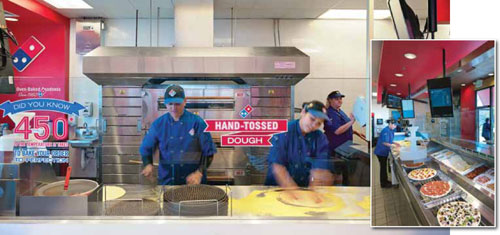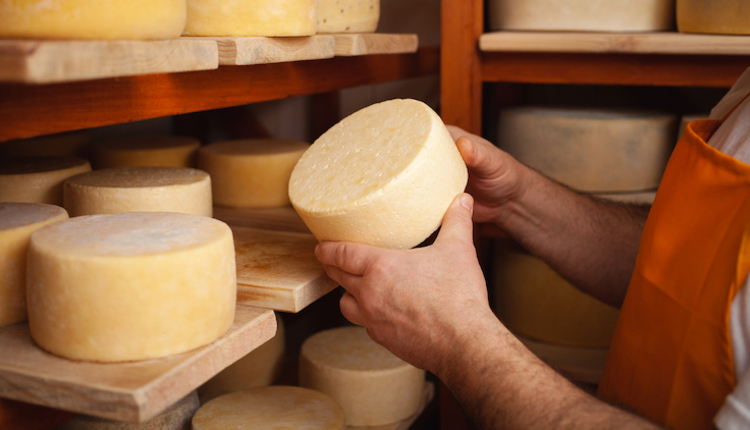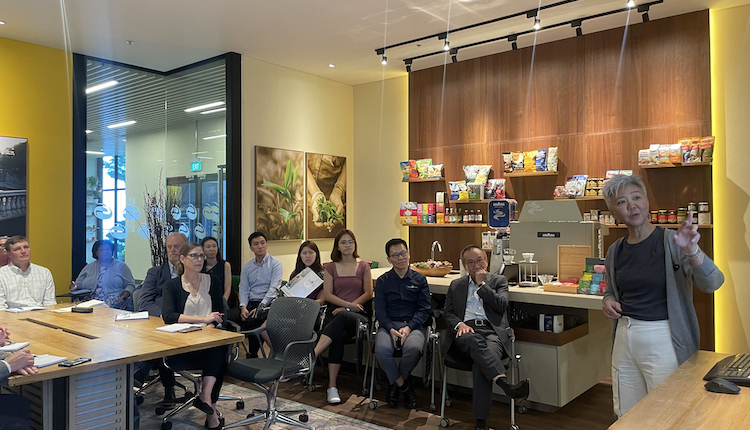
The relationship started in 2008 and continues to pay dividends today.
Pizza. It's at the heart of cheese sales accounting for 25 to 28 percent of all cheese consumption nationally in any given year. If pizza sales stall, so does cheese. That was the case in 2008 when the recently minted market-leading cheese, Mozzarella, fell nearly a half a pound in per capita consumption when compared to the prior year. The reason was two-fold: all consumer sales were off due to the sluggish economy and the pizza category was getting stale due to lack of market innovation.
It was that same year Domino's was taking an inward look at their entire menu.
"Our food did not taste good enough," said Brandon Solano, then vice president of marketing and innovation with Domino's Pizza. "As a team, we questioned everything we did in the past. Many in our company thought we were in the service business. We had to remind everyone that we are in the food business," noted Solano who now serves as vice president of development for Domino's.
Built a better pizza
"As we looked at our future, there were two choices: cost-save your way there or make great food," said Solano in reference to boosting sales. "We know consumers like pizza with a lot of cheese. So we decided to make a better pizza."
It was in 2008 that Domino's entered into a strategic partnership with Dairy Management Inc. (DMI), the dairy producer funded check-off and promotion program. Together, DMI and Domino's staff researched making better pizzas.
At the moment, DMI has one full-time employee dedicated to managing all aspects of the Domino's-DMI partnership on a daily basis. However, other staff resources are engaged with various Domino's teams in their specific areas of expertise as needed. This includes strategic and consumer insights, school food service, nutrition, culinary and communications consulting.
After two years of research, Domino's launched the American Legends pizza line which included pizzas covered with 40 percent more cheese. The American Legends line offers seven cheese options with Mozzarella serving as the cornerstone.
Following the introduction of the American Legends specialty pizzas, the chain completely reformulated its core lines of hand-tossed pizzas using the term "New and Inspired" to describe the transformation. With this change, all hand-tossed, cheese-only pizzas at Domino's now use 50 percent more cheese.
"During our research, we found, in almost every instance, making our product taste better involved adding more dairy," stated J. Patrick Doyle, CEO of Domino's Pizza. "We rebuilt all our food options to deliver what consumers prefer.
"We knew the new pizzas were dramatically better," added Doyle. "Materially speaking, we definitely improved it with the addition of better ingredients and more cheese. We had confidence in the product and we went ahead with a full launch, poking fun at ourselves along the way," said Doyle in reference to company commercials that aired revealing customer complaints about old products.
"You need to do things with consumers that are real today. Spin no longer works," he stated. "Twenty years ago, a brand could define itself through an ad campaign. Social media has changed all that. A bad experience gets told to a whole lot more people," said Doyle who noted his company spends a great deal of energy monitoring trend analysis and internet buzz. "We try to respond to everything out there . . . Tweets and Facebook posts included."
"Cheese is fundamentally what we sell," noted Doyle. "It's our biggest ingredient expense. It also brings the most taste."
Consumers have responded to the additional cheese on Domino's pizzas. "The industry has moved an additional 6.6 billion pounds of milk in the pizza category since 2009 thanks to innovation," said Doyle. As a point of reference, that would be slightly more milk than the entire state of Washington produced throughout 2011.
The same trajectory that has impacted dairy product use has held true for Domino's, making the joint project a win-win for both parties. "Since 2009, when we reinvigorated our pizza with more cheese, same store sales are up 13.9 percent," said Doyle. "That's tops among quick service restaurants (QSR)."
As Domino's has fueled growth and innovation in the pizza category, it has raised the bar for its competitors that have begun to offer more cheese on its pizzas, too. This is good news for dairy producers as pizza is a $35 billion product category in the U.S. with Domino's firmly in second place with about 10 percent market share. The chain has slightly under 5,000 stores in the U.S. with nearly the same number around the globe.
"Pizza translates really well around the world," said Doyle when discussing food choices. "You can localize the toppings. For example, fish is a popular pizza topping throughout Asia," noted the CEO of the international franchise based out of Ann Arbor, Mich. "No matter what the topping, cheese serves as the base. As we grow, so do our cheese sales. American-produced cheese is now being sold in Australia, parts of Asia and the Middle East," said Doyle.
Milk is the next step
As for the partnership between Domino's and the nation's dairy producers, there have been additional synergies. "We are reinventing our stores through a retail transformation. This transformation will include cold white and chocolate milk at our retail counters right next to the checkout," said Doyle noting stores in the Seattle, Wash., area would be some of the first to receive a face-lift.
The ongoing relationship has paid off for dairy producers in other ways, too. As the relationship between the two groups has unfolded, trust and a mutual understanding has built between both groups. Domino's understands what hardworking dairy farm families do each day to produce dairy products and care for their animals.
As for the future, Doyle believes the relationship between Domino's and DMI can bear more fruit. "There will be a great deal of continued work with DMI to develop products we can effectively sell."
This Hoard's Dairyman article appears on page 51 of the January 25, 2013 issue.








